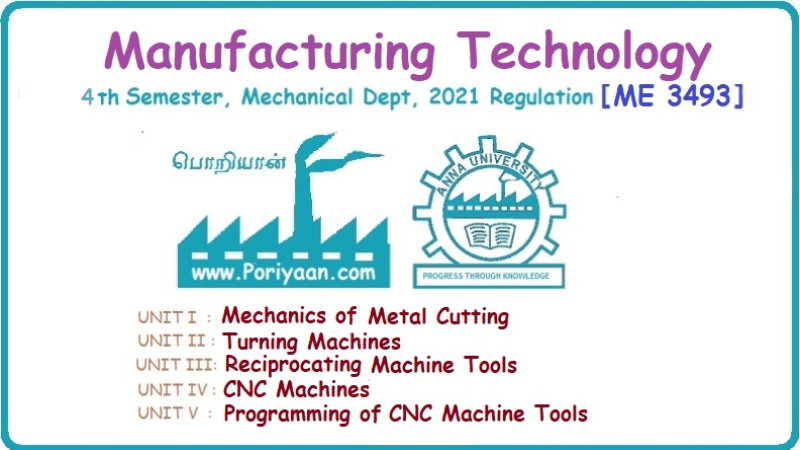Manufacturing Technology: Unit V: Programming of CNC Machine Tools
APT Programming
Programming of CNC Machine Tools - Manufacturing Technology
It is the abbreviation of Automatically Programmed Tools (APT). Massachusetts Institute of Technology (MIT), USA, developed this language in June 1956. Initially, it was used for contesting programs.
APT PROGRAMMING It is the abbreviation of Automatically Programmed Tools (APT). Massachusetts Institute of Technology (MIT), USA, developed this language in June 1956. Initially, it was used for contesting programs. APT is a three-dimensional system controlling up to five axes including the rotational coordinates. It includes the following: • APTURN for Lathes • APTMIC for mill and drill • APT POINT for point-to-point operation APT program is used to command the cutting tool through its sequence of the machining process. APT is also used to calculate the cutter positions. There are four types of statements in APT language. (i) Geometric statements (ii) Motion statements (iii) Postprocessor statements (iv) Special control or auxiliary statements. 1. Geometric statements: These statements are used to define the part configuration which includes points, lines, circles, planes, cylinders, ellipses, cones, general conics and quadrics with a total of fifteen different surfaces. The format used for geometry statement is given by Symbol = geometry type / descriptive data. 2. Motion statements: These statements are used to control the cutter path to generate the part and include start- up procedures, point-to-point programming, cutter description and direction modifiers, The format used for motion, statement is given by Motion command / descriptive data 3. Postprocessor statements: To write a complete part program, statements must be written to control the operation of the spindle, feed and other features of the machine tool. They are called postprocessor statements. The postprocessor allows the transformation of a postprocessor control statement into an appropriate code of the control. Examples of post-processor statements are given below. COOLNT/ON SPINDL/ON FEDRAT/20 SPINDL/ISOO, CCW END 4. Auxiliary statements: Auxiliary statements are used for cutter size definition, part identification and so on. These statements control the output listing, translation, rotation and repetitive programming techniques. Examples of auxiliary statement are: CLPRNT Cutter location print OUTTOL Outside tolerance INTOL Inside tolerance FINI Termination of the program. Problem 5.20 Prepare a program for milling the given component Figure 5.66 by milling process using APT. Solution: MACHINE/MILL SP = POINT/0.0 P1 = POINT/40,20 P2 = POINT/40,80 P3 = POINT/80,120 P4 = POINT/120. 100 P5 = POINT/140, 20 L1 = LINE/P1, P2 L2 = LINE/P2, ATANGL, 45 L3 = LINE/P3, ATANMGL, 0 L4 = LINE/P5, PARLEL, L1. L5 = LINE/P1, PERPTO, LI C1 = CIRCLE/CENTER, P4, RADIUS, 20 C2=CIRCLE/CENTER, P5 RADIUS, 30 INTOL/0 OUTTOL/0.005 CUTTER/16 SPINDL/2000, CLW COOLNT/ON FEDRAT/200 FROM/SP GO/TO, L1 TLLFT, GOLFT/L1, PAST, L2 GORGT/L2, PAST, L3 GORGT/L3, TANTO, C1 GOFWD/C1, PAST, L4 GOFWD/L4, PAST C2 GORGT/L5, PAST, L1 GOTO/SP COOLNT/OFF- SPINDLE/OFF FINI1. APT Statements
2. Sample Problem on APT Programming

Manufacturing Technology: Unit V: Programming of CNC Machine Tools : Tag: : Programming of CNC Machine Tools - Manufacturing Technology - APT Programming
Related Topics
Related Subjects
Manufacturing Technology
ME3493 4th semester Mechanical Dept | 2021 Regulation | 4th Semester Mechanical Dept 2021 Regulation
